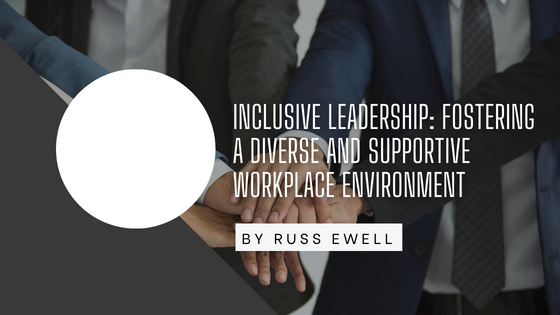In the dynamic landscape of modern businesses, fostering a diverse and inclusive workplace environment isn’t just a moral imperative; it’s a strategic advantage. Inclusive leadership, a style of leadership where leaders intentionally create a supportive and diverse workplace, is crucial in achieving this goal. It’s not just about having a diverse workforce but about leveraging this diversity to create a rich tapestry of ideas, perspectives, and approaches. In this blog post, explore the concept of inclusive leadership and its role in nurturing a workplace where every individual feels valued, respected, and empowered.
Understanding Inclusive Leadership
At its core, inclusive leadership is about embracing differences. It’s about acknowledging and appreciating the unique qualities each individual brings to the table, be it their cultural background, gender, age, or ways of thinking. Inclusive leaders actively seek out diverse opinions and experiences, valuing them as catalysts for innovation and creativity. They create an atmosphere where everyone feels safe to voice their ideas, knowing they will be heard and respected.
Promoting a Culture of Inclusivity
Inclusive leadership is not just a top-down initiative. It permeates the entire organizational culture. Leaders set the tone by exemplifying inclusive behaviors, but it’s equally important for these values to be embedded in company policies and practices. This might involve implementing blind recruitment processes to eliminate biases, offering diversity training to employees, and establishing mentorship programs that support underrepresented groups.
The Benefits of Inclusivity
A workplace that embraces inclusivity reaps numerous benefits. First and foremost, it enhances creativity and problem-solving. Diverse teams bring a variety of perspectives and ideas to the table, leading to innovative solutions to complex problems. Moreover, an inclusive environment fosters a strong sense of belonging among employees, increasing their job satisfaction and productivity. When individuals feel valued, they are more likely to engage fully in their work, leading to higher retention rates and overall organizational success.
Challenges and Overcoming Them
Creating an inclusive workplace isn’t without its challenges. Unconscious biases and stereotypes can seep into decision-making processes, hindering the pursuit of inclusivity. Overcoming these challenges requires ongoing education and awareness. It demands open conversations about biases and prejudices, encouraging employees to confront their own assumptions and learn from one another’s experiences.
Inclusive Leadership in Action
Some of the world’s most successful companies have embraced inclusive leadership and are reaping the rewards. For instance, tech giants like Google and Microsoft have made significant strides in creating diverse workforces and are continuously working towards making their workplaces even more inclusive. They invest in diversity and inclusion programs, provide resources for employee resource groups, and actively listen to employee feedback to drive positive change.
Inclusive leadership is not just a buzzword; it’s a fundamental shift in how we perceive leadership and the workplace. Embracing diversity isn’t just a matter of compliance or optics; it’s about tapping into the full potential of every individual within the organization. By fostering a diverse and supportive workplace environment through inclusive leadership, businesses can not only attract top talent but also nurture an atmosphere of creativity, innovation, and mutual respect, ensuring their long-term success in the global marketplace.
